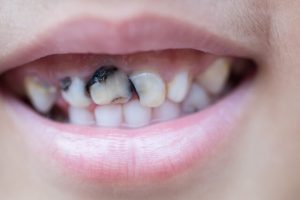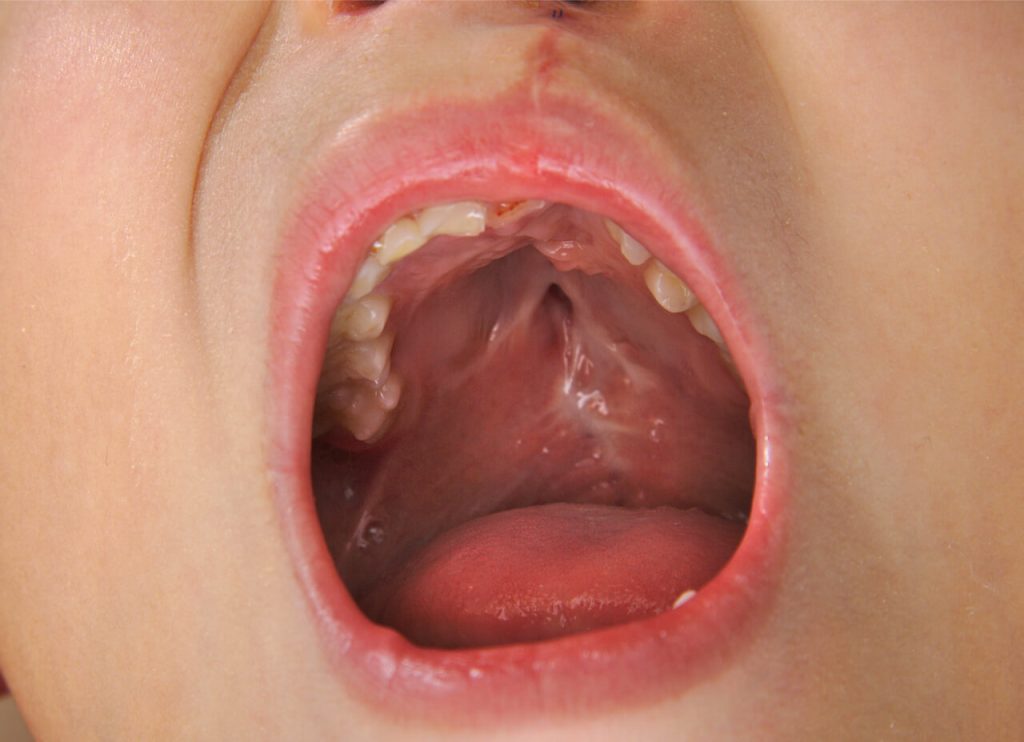There are several causes for a tooth having a black spot and its origin depends on whether the damage is external or internal. Unfortunately, no matter the reason, a black spot will need professional care to correct.
External damage is the better of the two scenarios as these causes are easier to treat and the tooth itself isn’t compromised. A common cause of a black spot is the staining of the tooth enamel from substances like coffee, tobacco, or medications. In this instance, you can try whitening treatments, but in all likelihood, you will have limited success removing it without the aid of a dentist.
The presence of tartar on your tooth can also show up as a black spot. Tartar is the result of plaque buildup which turns black due to the mix of dead bacteria and gingival crevicular fluid from the gum line. If your black spot is caused by tartar, you will likely also be experiencing gum disease. The good news is, a visit to the dental hygienist can resolve this issue and can be prevented by good dental practice in the future.
 If the tooth is damaged internally, then the black spot is probably due to decay or the existence of a cavity. Cavities are caused by either poor dental hygiene/care, or by sugary or acidic foods. Plaque and tartar buildup is also a factor. Alternatively, the enamel could be damaged and bacteria entered the tooth causing black tooth decay and infections. If decay is the cause of the black spot, the only treatment is to have your dentist remove the decayed portion of your tooth and use a filling to repair the area. If the tooth is severely damaged, it may be beyond repair and will be extracted.
If the tooth is damaged internally, then the black spot is probably due to decay or the existence of a cavity. Cavities are caused by either poor dental hygiene/care, or by sugary or acidic foods. Plaque and tartar buildup is also a factor. Alternatively, the enamel could be damaged and bacteria entered the tooth causing black tooth decay and infections. If decay is the cause of the black spot, the only treatment is to have your dentist remove the decayed portion of your tooth and use a filling to repair the area. If the tooth is severely damaged, it may be beyond repair and will be extracted.
Regardless of the cause of a black spot on your tooth, it’s recommended that you visit a dentist to resolve your issue and get guidance on how to protect your teeth in the future.

